Located on the western coast of picturesque Campania, the city of Pozzuoli offers a charming blend of ancient history, natural beauty and rich culture. With its ideal location on the azure waters of the Tyrrhenian Sea, this charming place has attracted tourists for centuries.
Pozzuoli delights with a collection of archaeological treasures that transport visitors to the world of bygone times. One of the most characteristic monuments is the Flavian Amphitheatre, the third largest Roman amphitheatre in Italy, dating back to the 1st century AD. How many attractions there are much more..

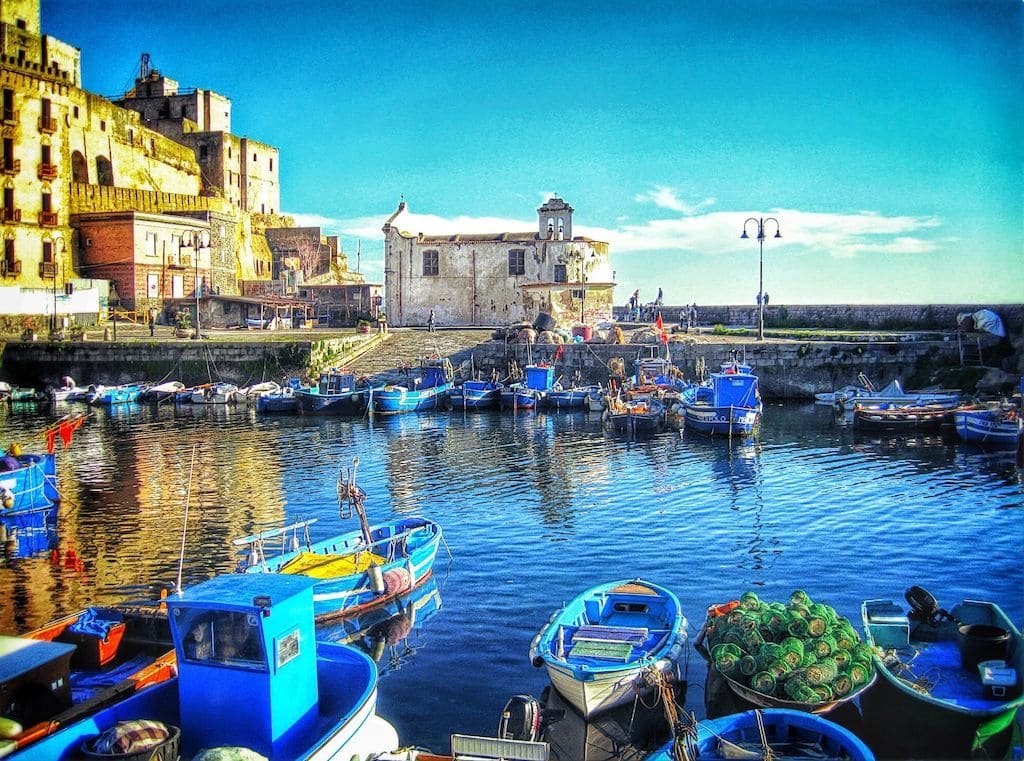
Pozzuoli (formerly Puteoli) is a city and comune in the province of Naples, Campania, Italy. A port city on the Tyrrhenian Sea.
Ferry from the port of Pozzuoli

The port of Pozzuoli in Italy offers ferry connections to Ischia & Procida. With 24 Sailings Daily, the port of Pozzuoli connects Italy with the Gulf of Naples.Ferry crossings to Procida take around 20 minutes, while to Ischia take around 1 hour 10 minutes. Ferry times from Pozzuoli vary depending on the time of year, so check regularly.
Popular Holiday Resorts:
- Hotel Le Dune Beach Club
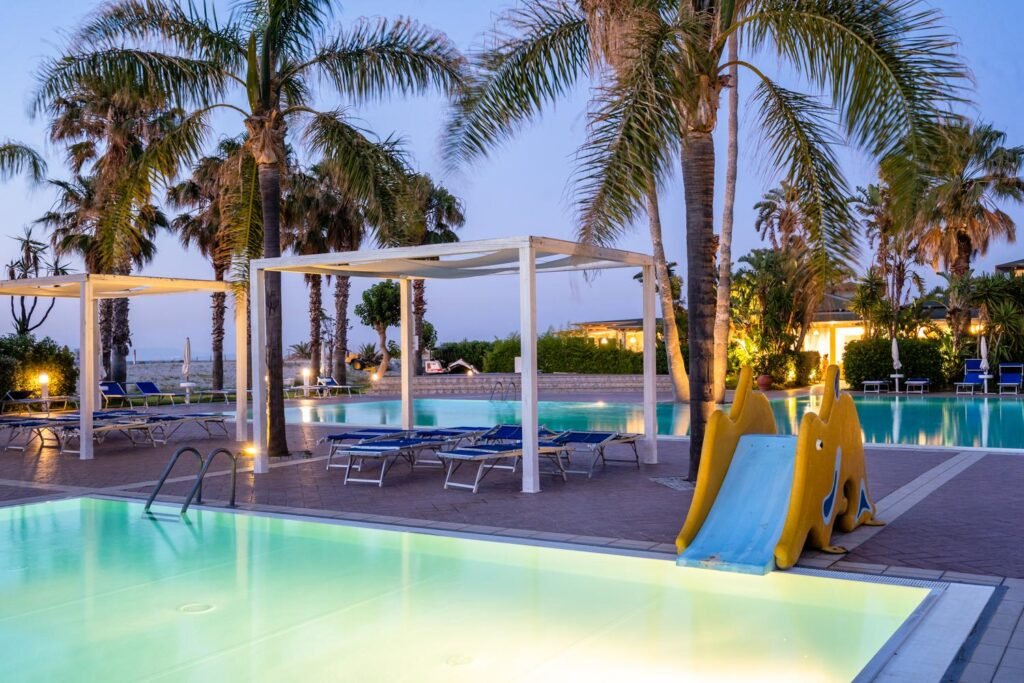
- Key Beach Park

- Breeze – Total Summer Club
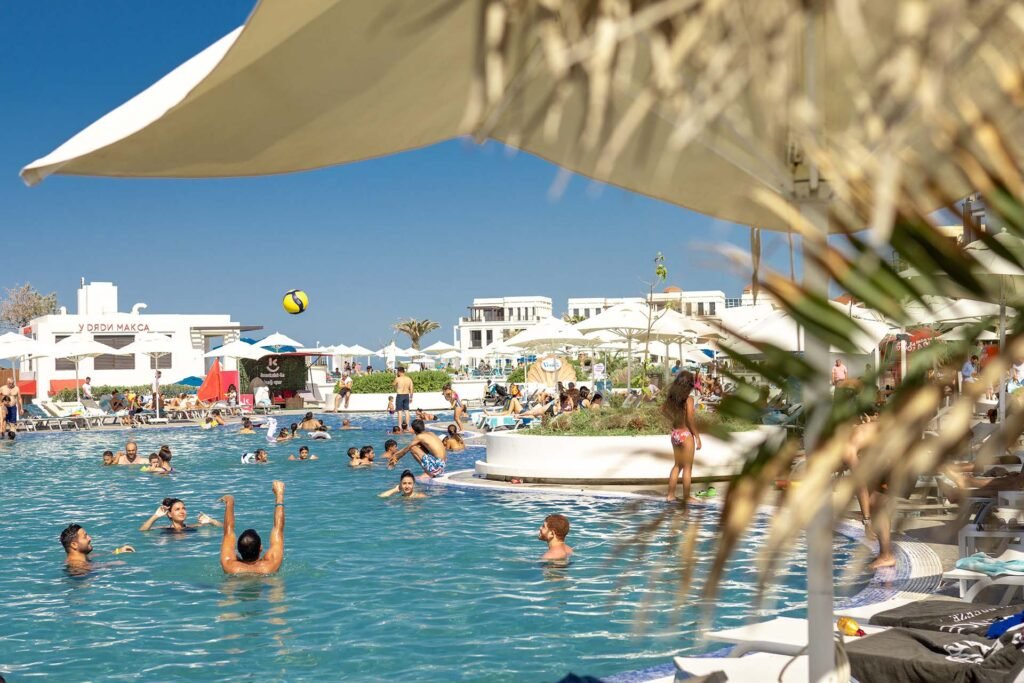
What’s worth seeing in Pozzuoli ?
Solfatara Volcano
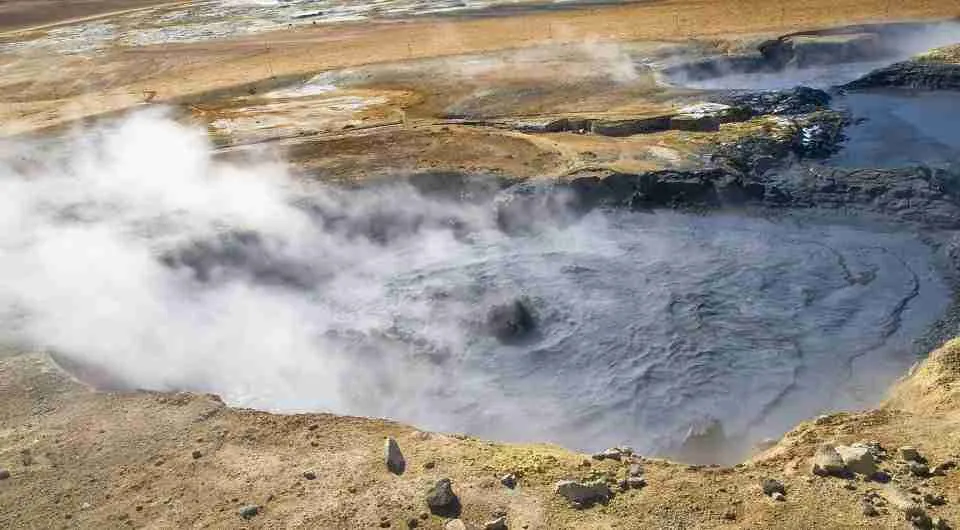
The Solfatara is a natural oasis (about 33 hectares) with peculiar volcanic phenomena, such as fumaroles, mud small volcanoes and mofettes. It’s is an ideal place for a nature walk because there are also forest areas and Mediterranean vegetation.
The visit lasts about 45 minutes and numerous information signs help visitors along the way. During this time, two particular phenomena can be observed: the condensation of steam (that occurs by putting a flame near a fumarole) and the rumble of the ground, that happens when a rock is dropped in some specific parts of the crater. The fall causes a peculiar rumble: this is because there are micro cavities produced by gas of fumaroles.
Phlegraean Fields
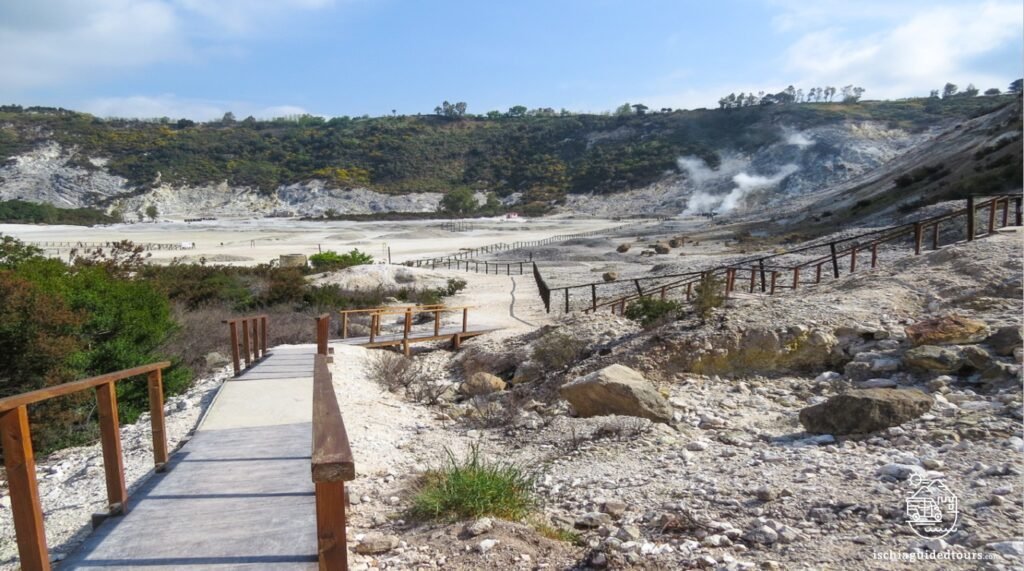
The Phlegraean Fields is a vast active volcanic area with a structure called a “caldera,” that is, a lowered area with an almost circular shape that was formed by large explosive eruptions. The caldera of the Phlegraean Fields extends from Monte di Procida to Posillipo and also includes an underwater part in the Gulf of Pozzuoli. Within the caldera, more than 70 eruptions have occurred over the past 15,000 years, forming volcanic buildings, craters and volcanic lakes that are still visible, such as Astroni, Solfatara and Lake Averno. The last eruption, in 1538, was preceded by a ground uplift that reached 19 meters in two years and gave rise to the volcano Monte Nuovo. Since then, the caldera has been quiescent, “dormant,” but now shows signs of activity such as seismicity, fumaroles, and ground deformation.
Cumae
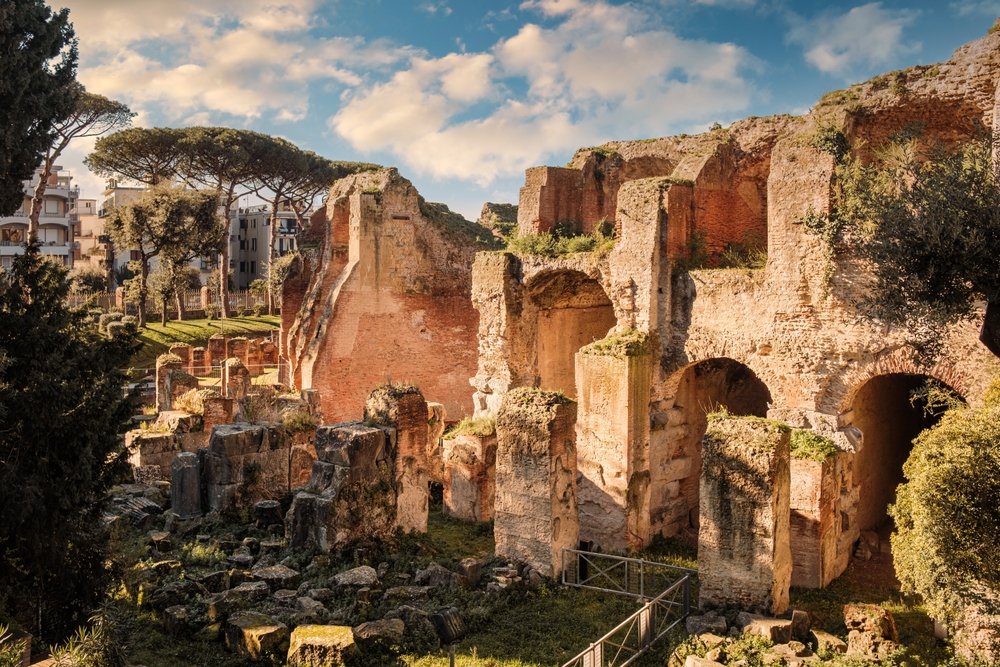
The ancient Greek colony Cumae shows the Archaeological Park of Cumae. Here, among legends, mysterious tunnels and the remains of ancient temples and tombs, you will rediscover what was once the prosperous city founded by the Greeks before it began its decline caused by the conquest of the Samnites. The famous Cavern of the Cumana Sibyl, home of the oracle of the same name, the Saracen Tower, the Temple of Jupiter and the Temple of Apollo are just a few of the magnificent discoveries unearthed over the years.
Macellum Temple of Serapis

Located just inland from the port of Pozzuoli, the 1st-century ruins of the Macellum of Pozzuoli, also known as the Temple of Serapis, are a delight for archaeology buffs. This ancient Roman market is located in the Phlegraean Fields and its columns rise directly from a brackish pool of water, as the site has sunk below sea level.
Flavian Neronian Amphitheatre
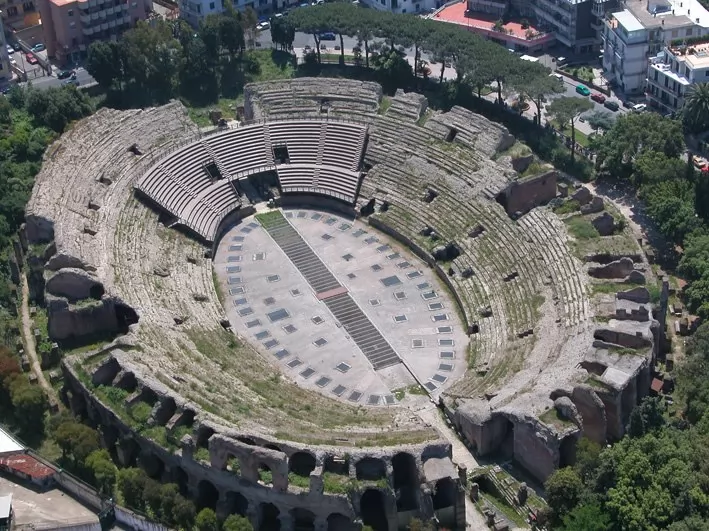
The Flavian Amphitheater is the third Roman amphitheatre in size, the largest in Italy after the Coliseum and the one in Capua. The first arcades supporting the cavea, divided into three sectors, summa, media and ima while seating was of greater or lesser value in relation to the distance from the arena.
This well-preserved facility once hosted gladiator fights and other spectacular events, and today it still impresses visitors with its splendor.
Rione Terra
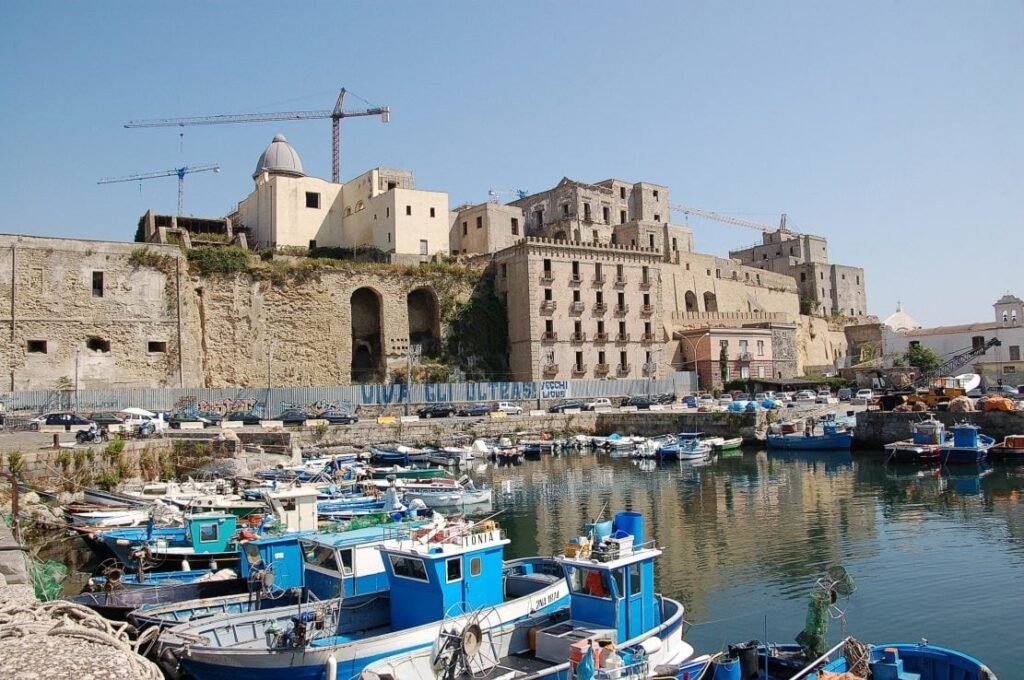
Rione Terra is a historic district in Pozzuoli, in the Phlegraean Fields region west of Naples. The ancient fortress originally served as an acropolis for the Greek settlement of Dicearkia before being integrated as the Roman port city of Puteoli.

Temple Cathedral of Pozzuoli
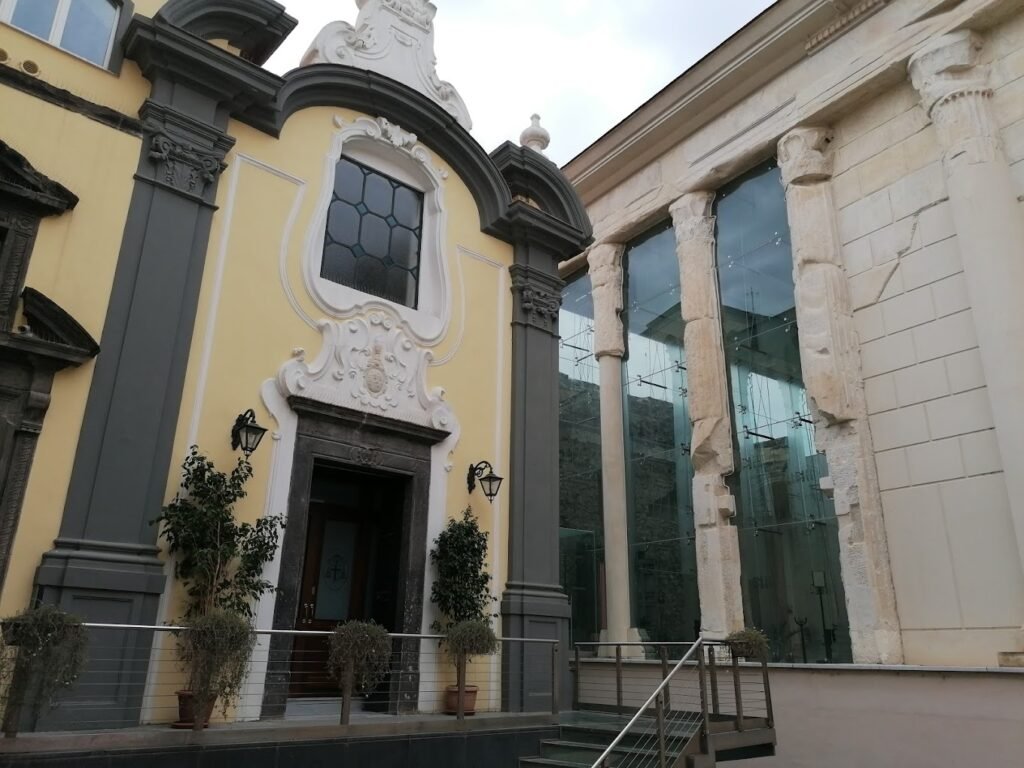

Pozzuoli Cathedral or Basilica of San Procolo martire is the main Roman Catholic church in Pozzuoli and the seat of the Diocese of Pozzuoli. It is located on the top of the Rione Terra and is built around an ancient Roman temple.

Via Sandro Pertini
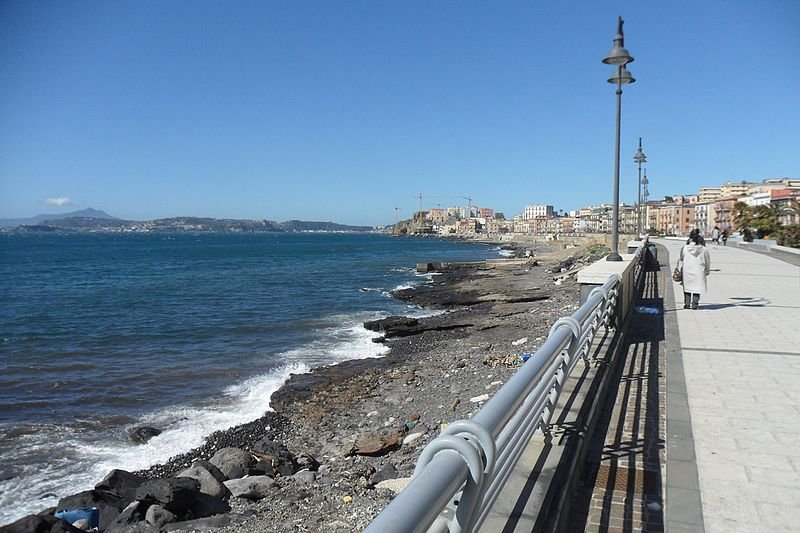
Via Sandro Pertini is a beautiful area, perfect for a walk by the sea, as well as bike trips and other activities. It is a good point to take pictures with the wonderful sea in the background.

Averno Lake
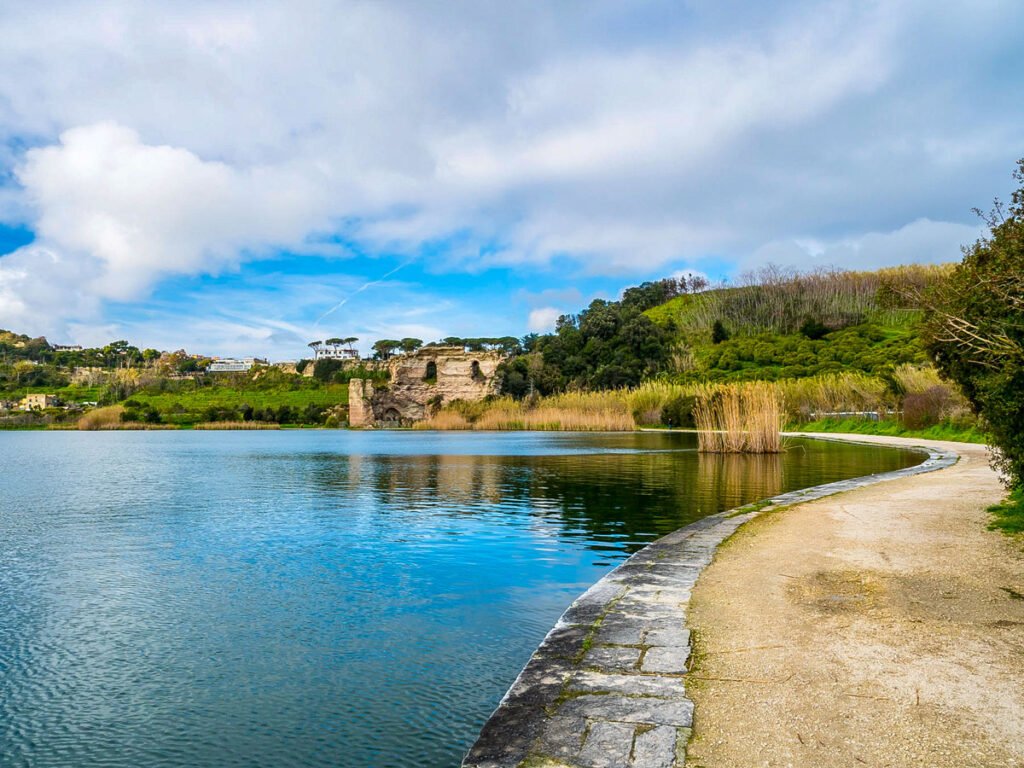
Lake Averno, just up the coast from near Pozzuoli, is so bound up with our Western mythology and history that it’s difficult to think of it as the focus of a court battle. The right are the Roman ruins of the so-called Temple of Apollo. It is accessible by a footpath that runs the perimeter of the lake. The entire area is part of the Campi Flegrei —the Flegrean (Fiery) Fields.
Today the lake is populated by several is, waterfowl that are used to nest among the reeds of the bodies of water. These include coots, grebes and mallards. Freshwater turtles are also often illegally released on the shores of the lake.
